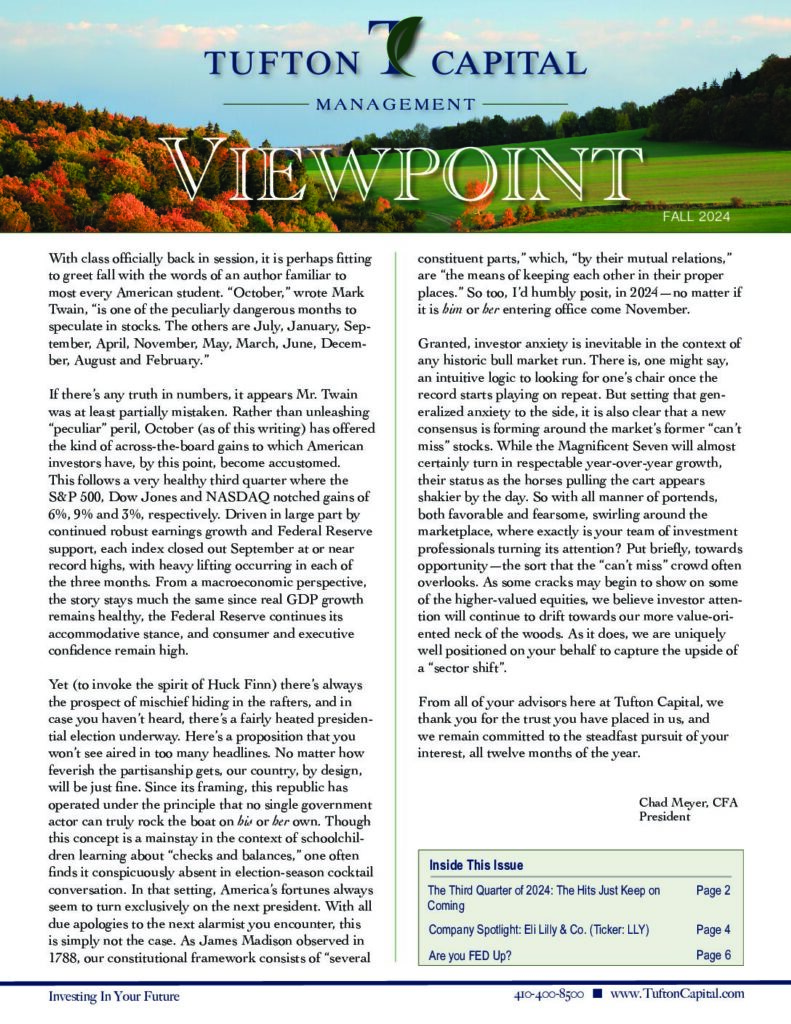 The U.S. Shale Revolution has proved to be nothing short of remarkable. Through the use of horizontal drilling and hydraulic fracturing, also known as “fracking,” the U.S. has become one of the world’s largest oil producers with production of 9.7 million barrels per day, representing approximately 10% of global production. However, many investors believe that the recent decline in oil prices to $60 per barrel has posed a threat to many U.S. shale producers.
The U.S. Shale Revolution has proved to be nothing short of remarkable. Through the use of horizontal drilling and hydraulic fracturing, also known as “fracking,” the U.S. has become one of the world’s largest oil producers with production of 9.7 million barrels per day, representing approximately 10% of global production. However, many investors believe that the recent decline in oil prices to $60 per barrel has posed a threat to many U.S. shale producers.
Although prior oil crashes have imposed drastic effects on oil producers, the dynamics of shale drilling offer a different production scenario. While production from a conventional well can produce a steady volume for several decades, production from the average shale well typically declines an estimated 60% to 70% after the first year. This drop forces companies to have more flexibility in well development in addition to well production. (more…)
A succession plan for your business is one of the most important safeguards you can use to ensure the company’s future success. Approximately one third of family businesses that transfer to the next generation are successful, and only 15 percent make it to the third generation. Choosing tomorrow’s leaders and formulating a plan for your retirement, death, divorce or disability are tasks that should be done early and tweaked often. The transfer of power and wealth can provide a smooth transition or can be the demise of a company, depending on how future leaders are chosen and groomed, and how tax and estate planning implications are handled.
There are various business succession options available to the owners of privately held businesses. These include:
- Transfer of ownership to the next generation
- Employee stock ownership plan (ESOP)
- Public offering
- Recapitalization of the business
- Sale of the business to a third party
- Liquidation of the business
Transfer Ownership to Next Generation
When choosing and grooming successors for your business, you must consider their business strength and savvy, and the psychological and emotional impacts of any decision on employees and family members. (more…)
 Mr. Rubin joins Hardesty Capital as Vice President, Senior Portfolio Manager, and member of the Investment Committee. His role is to manage existing high net worth client portfolios while also increasing Hardesty Capital’s client base. Mr. Rubin also uses his experience as Co-Head of Equity Research at Mercantile Trust (now PNC) to actively manage the investment research process with the Investment Committee.
Mr. Rubin joins Hardesty Capital as Vice President, Senior Portfolio Manager, and member of the Investment Committee. His role is to manage existing high net worth client portfolios while also increasing Hardesty Capital’s client base. Mr. Rubin also uses his experience as Co-Head of Equity Research at Mercantile Trust (now PNC) to actively manage the investment research process with the Investment Committee.
He has worked in many leadership roles throughout his 22 years in the investment management industry. Most recently, he was Senior Investment Advisor at PNC Wealth Management, where he spent twelve years working with high net worth clients. He also served as Senior Equity Research Analyst, where he was responsible for research coverage and securities recommendations to portfolio managers. Prior to that, he spent five years at Legg Mason Wood Walker (now Stifel Nicolaus) as an Equity Research Analyst.
Mr. Rubin successfully completed the Chartered Financial Analyst program in 2000. He received his Certified Public Accountant (CPA) certificate in 1994 and his Masters of Business Administration (MBA) from Loyola University Maryland in 1998. Mr. Rubin is a member of the Baltimore CFA Society and the CFA Institute.
 Mr. Peck joins Hardesty Capital as Marketing Associate and is responsible for identifying prospects as well as other marketing efforts. Prior to joining Hardesty Capital, Mr. Peck was a Client Service Associate at Morgan Stanley Wealth Management. He graduated from Denison University in 2014 and served as an intern for Hardesty Capital during the summer of 2013.
Mr. Peck joins Hardesty Capital as Marketing Associate and is responsible for identifying prospects as well as other marketing efforts. Prior to joining Hardesty Capital, Mr. Peck was a Client Service Associate at Morgan Stanley Wealth Management. He graduated from Denison University in 2014 and served as an intern for Hardesty Capital during the summer of 2013.
We are excited for Rick and Neill to join the team at Hardesty Capital. We have so much opportunity and will continue our growth strategy with the addition of new staff while maintaining our integrity as a value-oriented investment firm.
 In today’s highly regulated world of retirement planning for your business and your employees, owners offering 401(k) plans have the increasing responsibility of serving as a fiduciary to the plan. Not meeting your fiduciary duties as a plan sponsor is a violation of new ERISA regulations and leaves you vulnerable to potential litigation if the plan underperforms.
In today’s highly regulated world of retirement planning for your business and your employees, owners offering 401(k) plans have the increasing responsibility of serving as a fiduciary to the plan. Not meeting your fiduciary duties as a plan sponsor is a violation of new ERISA regulations and leaves you vulnerable to potential litigation if the plan underperforms.
As the owner of a business with a 401(k) plan, you and your board have a legal obligation, or a fiduciary duty, to act in the best interest of your employees. Many unsuspecting owners, or plan sponsors, hire outside advisors to oversee their plans who are not considered fiduciaries. By hiring non-fiduciaries as advisors (such as investment brokers or insurance agents), your legal responsibilities may not be upheld. Since these salespeople may put their companies’ (and their own) interests first, your fiduciary duty to your employees could be compromised. While these non-fiduciaries may have a “suitability standard” to provide you with reasonable financial products, these offerings are often likely to benefit the brokers more than your employees. (more…)
The true sources of excess returns
 The decision of how to allocate your money between asset classes (bonds, stocks, international, etc.) is important, we know. But just how important is it? There are many sources that say “over 90%” of your return comes from asset allocation. This oft-quoted statistic comes from a misinterpreted financial study from 1986 (“Determinants of Portfolio Performance,” by Gary P. Brinson, Randolph Hood, and Gilbert L. Beebower, published in the Financial Analysts Journal). What the study said was that asset allocation explained 93.6% of the variation in a portfolio’s quarterly returns. What does “that“ mean?
The decision of how to allocate your money between asset classes (bonds, stocks, international, etc.) is important, we know. But just how important is it? There are many sources that say “over 90%” of your return comes from asset allocation. This oft-quoted statistic comes from a misinterpreted financial study from 1986 (“Determinants of Portfolio Performance,” by Gary P. Brinson, Randolph Hood, and Gilbert L. Beebower, published in the Financial Analysts Journal). What the study said was that asset allocation explained 93.6% of the variation in a portfolio’s quarterly returns. What does “that“ mean?
In fact, even that statistic has been hotly debated and interpreted in many ways. For clarity on this issue, we look to the ever-academic CFA institute, which tells us that, as a rule, “about three-quarters of a typical fund’s variation in time-series returns comes from general market movement, with the remaining portion split roughly evenly between the specific asset allocation and active management.” (Here, “fund” is referring to balanced mutual funds and pension plans.) (more…)
 The US economy continued to strengthen in the fourth quarter of 2014. Further momentum in the domestic automobile sector, particularly from truck sales, resulted in annualized vehicle sales of 17 million, very close to the all-time highs of 2005. Gross Domestic Product advanced 5.0% in the third quarter, the strongest performance since the recession of 2009. Consumer Confidence reached 92.6, up from 77.5 a year ago, a very sharp confirmation that the economy is on an upward track. Other economic indicators, including inventory levels, operating ratios, and vendor performance all confirm that the recovery is strengthening.
The US economy continued to strengthen in the fourth quarter of 2014. Further momentum in the domestic automobile sector, particularly from truck sales, resulted in annualized vehicle sales of 17 million, very close to the all-time highs of 2005. Gross Domestic Product advanced 5.0% in the third quarter, the strongest performance since the recession of 2009. Consumer Confidence reached 92.6, up from 77.5 a year ago, a very sharp confirmation that the economy is on an upward track. Other economic indicators, including inventory levels, operating ratios, and vendor performance all confirm that the recovery is strengthening.
As positive as the news is on the domestic economy, the rest of the world has experienced a sudden, and in some cases, sharp contraction. European economies have retreated, particularly in Italy, Greece, and France. European central bankers have responded by dropping interest rates, which are now lower than those in the United States, signaling weakness and significant deflationary trends. In some of these southern European economies, unemployment rates for those under 25 now exceed 20%. (more…)
 Entering 2015, market fundamentals remain similar to how they were a year ago. Globally, growth is slowing. Geopolitically, the landscape is charged. Economically, the US is improving, but slowly. You will recall that our stock market forecast for 2014 called for a below-average year considering these issues. Our expectation was for stocks to return a mid-single digit return, between five and seven percent. In fact, the S&P 500 returned 13.7%, a much stronger year than anticipated. Our forecast for stocks in 2015 is the same as it was a year ago: mid-single digit returns. (more…)
Entering 2015, market fundamentals remain similar to how they were a year ago. Globally, growth is slowing. Geopolitically, the landscape is charged. Economically, the US is improving, but slowly. You will recall that our stock market forecast for 2014 called for a below-average year considering these issues. Our expectation was for stocks to return a mid-single digit return, between five and seven percent. In fact, the S&P 500 returned 13.7%, a much stronger year than anticipated. Our forecast for stocks in 2015 is the same as it was a year ago: mid-single digit returns. (more…)
 As we look back on the past twelve months, we’re pleased to report another strong year of performance for our firm’s clients. A strengthening economy has helped the bull market continue, with the S&P 500 Index posting its fifth double-digit gain in six years. Hardesty Capital Management also experienced a very positive year, as our AUM (assets under management) reached a level just shy of $1 billion, a company record. We are so appreciative of our wonderful clients and their support of our firm’s continued growth. (more…)
As we look back on the past twelve months, we’re pleased to report another strong year of performance for our firm’s clients. A strengthening economy has helped the bull market continue, with the S&P 500 Index posting its fifth double-digit gain in six years. Hardesty Capital Management also experienced a very positive year, as our AUM (assets under management) reached a level just shy of $1 billion, a company record. We are so appreciative of our wonderful clients and their support of our firm’s continued growth. (more…)
 As the year began, our 2014 forecast for US stocks called for sub-par returns. We did not anticipate a losing year, but expected gains in the low-to-mid single digits. Our thinking was that valuation was getting a little stretched coming off of two big years in 2012 and 2013, up almost 50% cumulatively. In addition, we thought a rising interest rate environment would make it more difficult for stocks to continue moving higher.
As the year began, our 2014 forecast for US stocks called for sub-par returns. We did not anticipate a losing year, but expected gains in the low-to-mid single digits. Our thinking was that valuation was getting a little stretched coming off of two big years in 2012 and 2013, up almost 50% cumulatively. In addition, we thought a rising interest rate environment would make it more difficult for stocks to continue moving higher.
So far, neither forecast is on track as the US market is up 8.35% through nine months and interest rates have moved lower. But we hold steadfast to our original forecasts. If anything, valuations for stocks have worsened a little. Stocks are not expensive, but they are trading above their long-term valuation (more…)
 In the third quarter, the economy continued to rebound from the disappointing weather-impacted first half of 2014. After a 2.1% decline in GDP in the first quarter, second quarter results indicate an increase of 4.6%. With this increase, there are signs that growth in the economy is beginning to accelerate. Car and truck sales have strengthened to a 16.3 million unit rate, nearly matching the prerecession record. Durable good orders in August were 9.0% above a year ago led by huge increases in aircraft orders. Other encouraging news was the continued improvement in consumer confidence (+13.0%) and an increase in leading economic indicators (+7.7%). (more…)
In the third quarter, the economy continued to rebound from the disappointing weather-impacted first half of 2014. After a 2.1% decline in GDP in the first quarter, second quarter results indicate an increase of 4.6%. With this increase, there are signs that growth in the economy is beginning to accelerate. Car and truck sales have strengthened to a 16.3 million unit rate, nearly matching the prerecession record. Durable good orders in August were 9.0% above a year ago led by huge increases in aircraft orders. Other encouraging news was the continued improvement in consumer confidence (+13.0%) and an increase in leading economic indicators (+7.7%). (more…)
 The VIX (VIX), widely known as the “Fear Gauge” index, is a measurement of the implied 30-day volatility of the S&P 500. The higher the VIX, the more investors fear that a market decline is in the near future; conversely, the lower the VIX, the more complacent investors are about the market.
The VIX (VIX), widely known as the “Fear Gauge” index, is a measurement of the implied 30-day volatility of the S&P 500. The higher the VIX, the more investors fear that a market decline is in the near future; conversely, the lower the VIX, the more complacent investors are about the market.
This past summer, the VIX registered the lowest level seen in the last seven years, implying that investors are not fearful of a near-term market correction or a stock market crash. Despite the political conflicts in Russia and the Middle East, the VIX today is not far from that summer low, signaling that investors still do not expect a sharp stock market decline. (more…)
 A lot has been said about the importance of rebalancing. In fact, we at Hardesty Capital have said a lot about it. But let’s take a step back. In investing, every action taken is about managing risk versus return. Investors choose what level of risk they are willing to accept, knowing that with more risk they can expect higher return. The opposite is also true: less risk means less return. When investing in individual securities, research is performed to determine if that relationship is misaligned, that is, to look for higher returns with less risk. However, when talking about entire asset classes and their place in a portfolio, all that we need to focus on is managing risk, reward, and time. (more…)
A lot has been said about the importance of rebalancing. In fact, we at Hardesty Capital have said a lot about it. But let’s take a step back. In investing, every action taken is about managing risk versus return. Investors choose what level of risk they are willing to accept, knowing that with more risk they can expect higher return. The opposite is also true: less risk means less return. When investing in individual securities, research is performed to determine if that relationship is misaligned, that is, to look for higher returns with less risk. However, when talking about entire asset classes and their place in a portfolio, all that we need to focus on is managing risk, reward, and time. (more…)
 When choosing an investment professional, there are many different avenues to navigate. Understanding the differences between Registered Investment Advisors (RIAs) and brokers will help you determine the best professional council for your investment needs. A Registered Investment Advisor is defined by the Investment Advisers Act of 1940 as a “person or firm that, for compensation, is engaged in the act of providing advice, making recommendations, issuing reports or furnishing analyses on securities, either directly or through publications.” As a Registered Investment Advisor (RIA), Tufton Capital Management has a fiduciary duty that sets us apart from stockbrokers and other salespeople who charge a commission for executing sell orders submitted by their clients. (more…)
When choosing an investment professional, there are many different avenues to navigate. Understanding the differences between Registered Investment Advisors (RIAs) and brokers will help you determine the best professional council for your investment needs. A Registered Investment Advisor is defined by the Investment Advisers Act of 1940 as a “person or firm that, for compensation, is engaged in the act of providing advice, making recommendations, issuing reports or furnishing analyses on securities, either directly or through publications.” As a Registered Investment Advisor (RIA), Tufton Capital Management has a fiduciary duty that sets us apart from stockbrokers and other salespeople who charge a commission for executing sell orders submitted by their clients. (more…)
 Let’s take a moment to look at the first half of 2014. Both stocks and bonds moved forward in the first half of the year. The S&P 500 gained 7.12%, and the Dow Jones Industrial Average gained 2.68%. The 10-year Treasury rate fell from 3.0% to 2.6%, resulting in a 2.1% increase in the price of this important benchmark. These results were consistent with a number of mixed signals coming from the economic recovery, which has continued to be on-again and off-again.
Let’s take a moment to look at the first half of 2014. Both stocks and bonds moved forward in the first half of the year. The S&P 500 gained 7.12%, and the Dow Jones Industrial Average gained 2.68%. The 10-year Treasury rate fell from 3.0% to 2.6%, resulting in a 2.1% increase in the price of this important benchmark. These results were consistent with a number of mixed signals coming from the economic recovery, which has continued to be on-again and off-again.
This in part is because the country experienced a severe winter, a bitter cold, and many weather-related economic disruptions. The result was that real gross domestic product fell 2.9% in the first quarter, considerably worse than the consensus expectations. We think first half weakness is only temporary and will result in a deferral of demand. Recent strong automobile sales coupled with improving housing demand suggest third quarter GDP could be up 3-4%. Because of the weak first half, the outlook on the balance of the year needs to be reasonably strong to reach our initial 3-4% full-year growth forecast. In order to err on the side of conservatism, our new forecast calls for growth to be in the 2-2.5% range. (more…)
 The financial markets struggled in the first quarter of 2014, but despite several challenges, managed to reach new all-time highs and also experienced a period of relatively stable interest rates. The actual results were as follows:
The financial markets struggled in the first quarter of 2014, but despite several challenges, managed to reach new all-time highs and also experienced a period of relatively stable interest rates. The actual results were as follows:
S&P 500 +1.8%
Dow Jones -0.1%.
10-Year Treasury +3%
Russell 2000 +1.1%
These results were all the more surprising against the backdrop of adverse weather conditions in North America, continued problems with the rollout of Obamacare, and the seizure of a large part of Ukraine by a re-energized Russia lead by Vladimir Putin. Finally, there was the mysterious disappearance of Malaysian Airlines flight 370 on the morning of March 8th. In a strange way, the missing airplane brought many nations together, including China, the U.S., the U.K., Australia, and India, in a determined search for the plane. How nice to have so many world powers working towards a common objective, which if successful would represent a cooperative global achievement. (more…)



